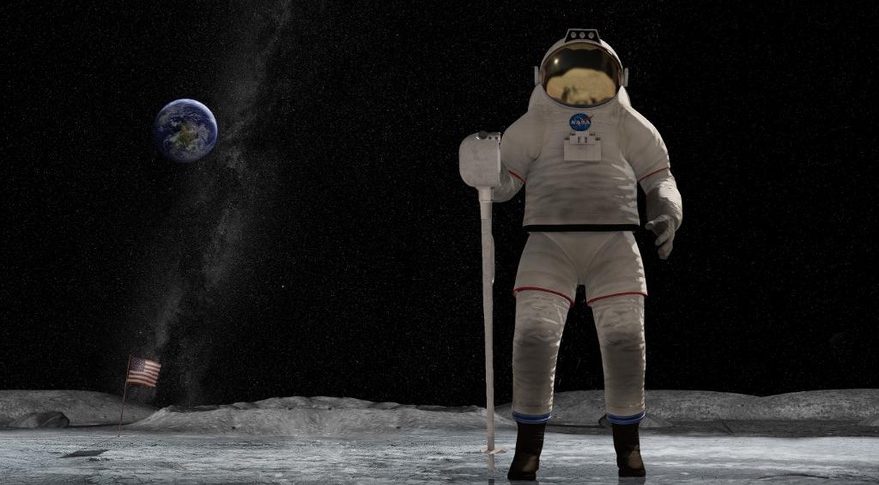NASA Chief Says Returning Astronauts to the Moon Could Cost $30 Billion

It was always going to be expensive, but NASA's first cost estimate for the agency's push to land humans on the moon by 2024 is finally here — and it's surprisingly cheap.
During an interview with CNN that aired today (June 14), NASA Administrator Jim Bridenstine offered his first concrete budget estimate for the agency's current lunar aspirations, a plan that has been dubbed the Artemis program. That plan includes recruiting commercial companies and international partners, building a lunar space station, landing humans at the moon's south pole by 2024 and framing the whole project as practicing for Mars.
"For the whole program, to get a sustainable presence on the moon, we're looking at between $20 and $30 billion," Bridenstine told CNN. He specified that the estimate represented additional money, beyond what the agency has already spent on the SLS rocket and Orion capsule it intends to use for the program.
Related: Can NASA Really Put Astronauts on the Moon in 2024?
Bridenstine also specified that the estimate represented money on top of the agency's current budget. Throughout his attempts to sell his agency, Congress and the public on the Artemis plan, he has repeatedly promised that the moon landing push will be separately funded and won't pull money from the agency's other activities.
Last month, President Donald Trump asked Congress to allot an extra $1.6 billion to NASA to fund the Artemis program in fiscal year 2020, which begins Oct. 1. But that request, which Congress has not yet evaluated, always included a caveat from Bridenstine specifying that it would be only the beginning of dramatic budget increases required for the program.
Until today, Bridenstine had demurred on providing a total budget estimate for the Artemis program, although he had publicly denied rumors that NASA would request $8 billion per year for five years to fund the moon push. (If the program total does indeed run to $30 billion and NASA gets its $1.6 billion for 2020, that would leave $7 billion per year for each of the four remaining years of the program.)
Breaking space news, the latest updates on rocket launches, skywatching events and more!
For comparison, NASA's last moonshot, the Constellation program that never came to fruition, was announced with an estimated cost of $104 billion in 2005. The Apollo program cost $25 billion — but that was in 1960s dollars.
More recently, the International Space Station has been estimated to have cost about $100 billion. Even the Hubble Space Telescope, between its construction, launch and in-orbit servicing, is estimated to have cost more than $10 billion over its life to date.
But returning humans to the moon in a more permanent way than Apollo is worth it, Bridenstine said.
"Think of it as a short-term investment to have a sustainable program at the moon where we're ultimately keeping our eyes on Mars," Bridenstine told CNN. "How do we learn to live and work on another world, namely the moon, and then go on to Mars and do it in a way [so that], when this is complete, the American people have a program they can be very proud of for the long term?"
- Apollo 11 at 50: A Complete Guide to the Historic Moon Landing Mission
- NASA's Historic Apollo 11 Moon Landing in Pictures
- Will NASA's Rush to Land Astronauts on the Moon Get Us to Mars Any Faster?
Email Meghan Bartels at mbartels@space.com or follow her @meghanbartels. Follow us on Twitter @Spacedotcom and on Facebook.
Join our Space Forums to keep talking space on the latest missions, night sky and more! And if you have a news tip, correction or comment, let us know at: community@space.com.

Meghan is a senior writer at Space.com and has more than five years' experience as a science journalist based in New York City. She joined Space.com in July 2018, with previous writing published in outlets including Newsweek and Audubon. Meghan earned an MA in science journalism from New York University and a BA in classics from Georgetown University, and in her free time she enjoys reading and visiting museums. Follow her on Twitter at @meghanbartels.
